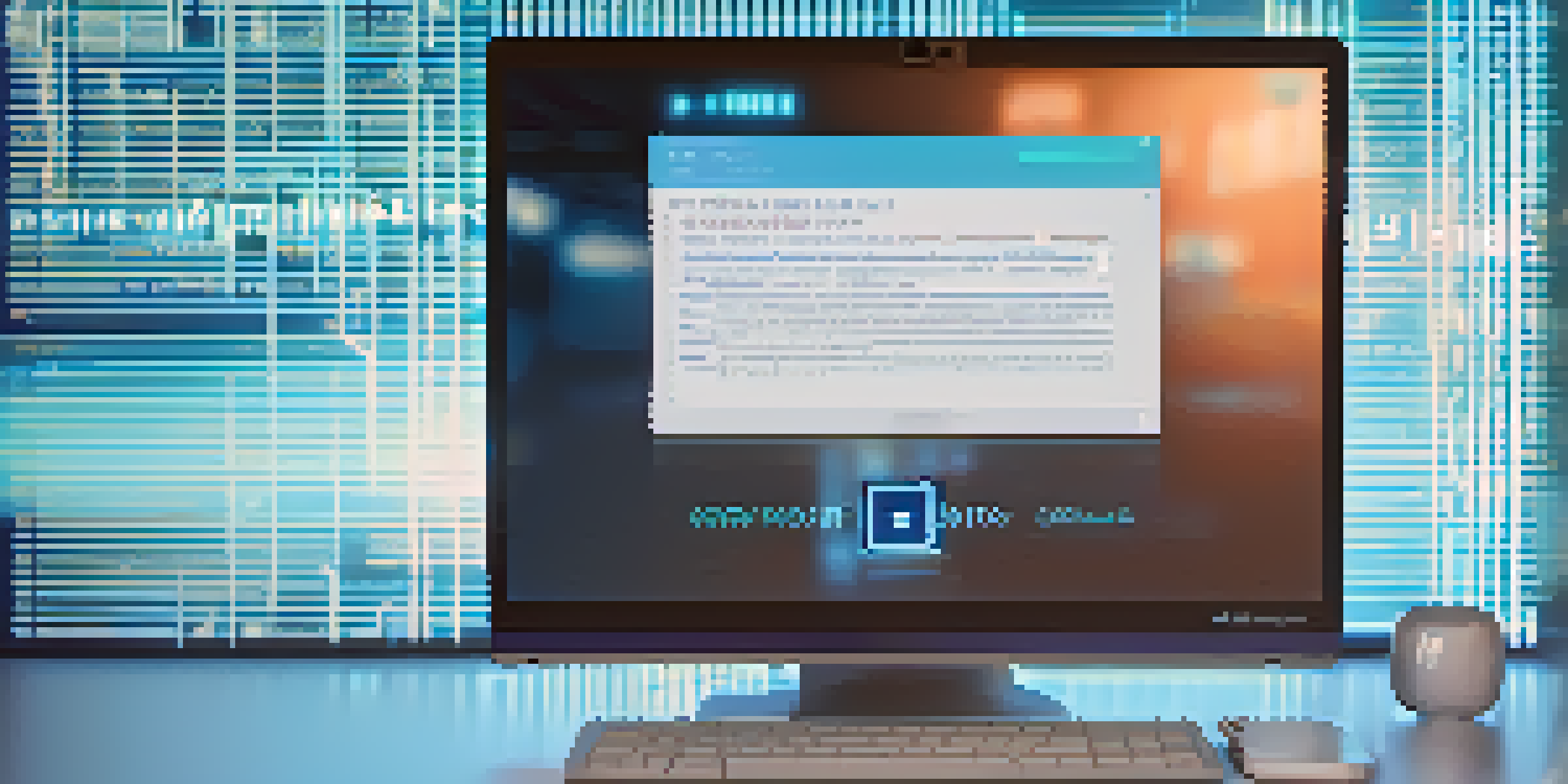Automated Auditing Tools for Ethereum Smart Contract Security

Understanding the Importance of Smart Contract Security
Smart contracts are self-executing contracts with the terms directly written into code. As Ethereum's popularity grows, so does the importance of security in these contracts. A single vulnerability can lead to significant financial losses or even complete project failures, making it crucial to prioritize security.
Security is not a product, but a process.
The decentralized nature of blockchain means that once a smart contract is deployed, it cannot be easily changed. This immutability is a double-edged sword; while it ensures trust, it also means that any flaws in the code can be permanently damaging. Therefore, the need for robust security measures is indispensable.
Automated auditing tools can help detect vulnerabilities before they become a problem. By identifying issues early in the development process, these tools provide an essential layer of security that protects both developers and users.
What Are Automated Auditing Tools?
Automated auditing tools are software solutions designed to analyze smart contract code for vulnerabilities. They work by scanning the codebase and identifying potential security issues, which can then be addressed by developers. This process significantly reduces the risk of human error during manual audits.

These tools often employ various techniques, such as static analysis and formal verification, to ensure comprehensive coverage of potential risks. Static analysis examines the code without executing it, while formal verification mathematically proves that the contract behaves as intended under all circumstances.
Smart Contracts Need Security
The security of smart contracts is critical, as vulnerabilities can lead to severe financial losses and project failures.
By automating the auditing process, developers can save time and resources while enhancing the security of their smart contracts. This allows teams to focus on building and improving their applications rather than getting bogged down in lengthy manual audits.
Key Features to Look for in Auditing Tools
When choosing an automated auditing tool, look for features that enhance its effectiveness. For instance, clear reporting capabilities are essential, as they allow developers to understand the vulnerabilities found and prioritize fixes. A good tool will present issues in a user-friendly manner, making it easier to address them.
An ounce of prevention is worth a pound of cure.
Another important feature is the ability to integrate with existing development workflows. This ensures that the auditing process can be seamlessly incorporated into the development cycle, allowing for continuous security checks. Tools that support popular programming languages and frameworks also offer greater flexibility.
Lastly, consider the tool's community support and documentation. A well-supported tool often means more frequent updates and a wealth of resources to help users troubleshoot issues, making it a more reliable choice in the long run.
Popular Automated Auditing Tools for Ethereum
Several automated auditing tools have gained popularity among Ethereum developers. Tools like MythX, Slither, and Oyente offer a range of features tailored to smart contract security. Each has its strengths and weaknesses, making it essential for developers to choose one that aligns with their specific needs.
MythX, for example, provides a cloud-based solution that combines static and dynamic analysis, making it a comprehensive choice for many developers. Slither, on the other hand, is an open-source tool that focuses on static analysis, allowing for quick integration into existing workflows.
Automated Tools Enhance Security
Automated auditing tools are essential for identifying vulnerabilities in smart contracts, allowing developers to address issues early in the development process.
Choosing the right tool can significantly impact the security of smart contracts. Therefore, developers should evaluate each option carefully, considering factors like ease of use, community support, and the types of vulnerabilities each tool can detect.
Integrating Automated Tools into Your Workflow
Integrating automated auditing tools into your development workflow can be a game-changer. To get started, incorporate the tool early in the development process, ideally during the coding phase. This proactive approach allows you to identify and fix vulnerabilities before they become embedded in the final product.
Additionally, consider setting up continuous integration (CI) pipelines that automatically run audits whenever code changes occur. This will help ensure that security is maintained throughout the development cycle, reducing the chances of introducing new vulnerabilities.
Regularly updating and configuring the auditing tools based on the evolving threat landscape is also crucial. Cybersecurity is an ever-changing field, and staying ahead of potential threats requires constant vigilance and adaptation.
Limitations of Automated Auditing Tools
While automated auditing tools are invaluable, they do have limitations. For instance, these tools may not catch all vulnerabilities, especially complex logic errors or issues that arise from specific use cases. This means relying solely on automated tools can create a false sense of security.
Moreover, automated tools can sometimes produce false positives, flagging issues that may not be actual vulnerabilities. This can lead to wasted time as developers sift through reports to identify genuine concerns. Understanding the limitations of these tools is essential for effective security management.
Combine Tools with Manual Reviews
To create a robust security strategy, it's important to combine automated audits with manual reviews to effectively identify and resolve potential vulnerabilities.
Thus, combining automated audits with manual reviews can provide a more comprehensive security strategy. By leveraging both methods, teams can maximize their chances of identifying and addressing vulnerabilities effectively.
The Future of Smart Contract Auditing
As the blockchain ecosystem evolves, so does the landscape of smart contract auditing. The rise of more sophisticated automated tools is paving the way for greater security in decentralized applications. These advancements will likely lead to the development of tools that can adapt to new threats and vulnerabilities as they emerge.
Furthermore, the integration of artificial intelligence (AI) and machine learning into auditing tools holds great promise. These technologies can enhance the ability of tools to identify complex vulnerabilities, making audits faster and more reliable.

Ultimately, the future of smart contract security will likely involve a combination of automated solutions and human expertise. By embracing both approaches, developers can create safer, more secure decentralized applications that users can trust.